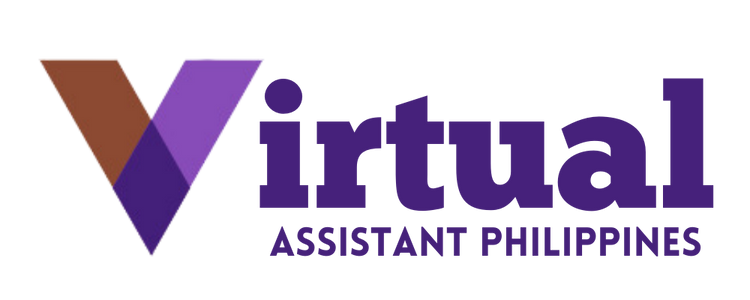
Virtual Assistants vs. In-House Staff: Which Is Better for Your Business?
In today’s fast-paced, digital-driven world, businesses are constantly looking for ways to streamline operations, reduce costs, and remain competitive. One question that often comes up is whether to hire a virtual assistant (VA) or bring on in-house staff. Both options have their merits, but which is the better choice for your business?
This blog post will help you weigh the pros and cons of virtual assistants versus in-house staff, guiding you toward the best decision for your specific needs.
The Role of Virtual Assistants and In-House Staff
Before diving into comparisons, it’s important to define what both virtual assistants and in-house staff do.
- Virtual Assistants (VAs): VAs work remotely, usually on a freelance or contract basis, and take on a range of tasks such as email management, customer service, scheduling, social media management, bookkeeping, and more. They often work for multiple clients and are hired on a flexible, as-needed basis.
- In-House Staff: These are employees who work on-site at your office or designated business location. They typically have full- or part-time contracts and are often responsible for broader tasks within the company, working closely with other team members.
Both VAs and in-house staff play essential roles in supporting business operations, but the decision between the two depends on various factors.
Cost Considerations
One of the biggest factors businesses take into account when deciding between virtual assistants and in-house staff is cost. Let’s break down the cost structure of both:
1. Cost of Hiring a Virtual Assistant
Virtual assistants are often more affordable for businesses, particularly small- to medium-sized enterprises, because they typically work on a contract basis. You pay only for the hours worked or tasks completed, meaning you avoid the overhead costs associated with full-time employees. This includes:
- No need to pay for office space, equipment, or utilities.
- No employee benefits like healthcare, retirement plans, or paid time off.
- Flexibility to scale up or down based on workload without long-term financial commitment.
Additionally, VAs often work from locations where the cost of living is lower, which can further reduce the price.
2. Cost of Hiring In-House Staff
While having in-house staff can offer more stability, the costs are generally much higher. In addition to salary, you’re responsible for benefits, taxes, office equipment, and potentially even training costs. Here’s a breakdown of some of the typical expenses:
- Salaries for full-time employees, which can be higher due to their geographic location or industry standards.
- Costs for health insurance, paid vacations, and other benefits.
- Office supplies and workspace costs.
- Taxes related to employment (e.g., Social Security, Medicare, unemployment insurance).
For companies with the budget to support an in-house team, these expenses may be justifiable. However, for businesses looking to minimize overhead, VAs can offer a significant cost-saving advantage.
Flexibility and Scalability
Another critical factor to consider is how easily your workforce can adapt to changes in workload and business demands.
1. Flexibility of Virtual Assistants
One of the biggest advantages of virtual assistants is their flexibility. VAs work on a freelance or contractual basis, meaning you can hire them as needed, whether it’s for a short-term project or ongoing support. You can scale up during busy periods and scale down when business slows without the complications of hiring or firing full-time staff.
This scalability is ideal for businesses that experience fluctuations in demand, like seasonal companies or startups in their growth phase.
2. Flexibility of In-House Staff
In-house staff are typically full-time employees, which provides less flexibility when it comes to scaling up or down. Once hired, in-house staff expect steady hours, and it can be challenging to adjust their workload if business needs shift. Reducing staff during slow periods can result in difficult decisions like layoffs, which can affect company morale and incur additional costs such as severance pay.
That said, having an in-house team can make it easier to pivot on long-term projects or implement strategic changes without onboarding new freelancers or external contractors.
Skill Set and Specialization
When deciding between virtual assistants and in-house staff, the skills and experience required for your business should also be considered.
1. Skill Set of Virtual Assistants
Virtual assistants often specialize in specific tasks, such as social media management, customer service, administrative work, or content creation. They usually bring a wealth of experience across different industries, as they work with multiple clients. If you need expertise in a particular area (e.g., SEO, graphic design, or marketing automation), a VA can often bring specialized knowledge to the table without the need for extensive training.
Because they work remotely and often on flexible schedules, VAs tend to be self-starters who require minimal supervision. This makes them ideal for handling repetitive tasks or niche roles that don’t need constant oversight.
2. Skill Set of In-House Staff
In-house staff, on the other hand, often have a broader understanding of your business, company culture, and internal processes. They are fully integrated into your team and can collaborate more easily with other departments. This can be crucial for complex projects that require deep knowledge of your business operations or ongoing communication with other employees.
In-house staff are also easier to train and develop over time. They can grow with your business and adapt their skills to your evolving needs, making them more versatile in the long term.
Collaboration and Communication
Effective communication is key to any successful working relationship, but it can vary depending on whether you’re working with virtual assistants or in-house staff.
1. Communication with Virtual Assistants
Since virtual assistants work remotely, communication is often done via email, chat apps like Slack, or video conferencing platforms like Zoom. While these tools make remote work highly efficient, they can occasionally lead to miscommunication, especially if the VA is in a different time zone.
However, many VAs are experienced in remote work and have developed strong communication skills to bridge these gaps. Setting clear expectations, using project management tools like Trello or Asana, and establishing regular check-ins can significantly improve the workflow with a VA.
2. Communication with In-House Staff
In-house employees have the advantage of being physically present, which allows for more spontaneous communication and collaboration. Brainstorming sessions, team meetings, and casual conversations are all easier to facilitate in an office environment. This immediate access can boost creativity and problem-solving, especially when working on large-scale projects.
If your business thrives on collaboration and needs continuous feedback loops, in-house staff may offer a smoother communication experience.
Long-Term Commitment and Loyalty
A final point of comparison is the level of commitment and loyalty you can expect from virtual assistants versus in-house staff.
1. Virtual Assistants and Loyalty
Since VAs often work with multiple clients, they may not have the same level of loyalty as an in-house employee who is deeply invested in your company’s success. While VAs can be reliable and dedicated, they may not be as focused on long-term goals as someone fully integrated into your team.
That said, many businesses develop long-term relationships with their virtual assistants, especially if the working arrangement is beneficial for both parties. Over time, a VA can become just as invested in your success as any in-house employee.
2. In-House Staff and Loyalty
In-house staff, by nature of their employment, tend to develop deeper connections with the business. They often feel more invested in the company’s long-term goals and can take on leadership roles as the business grows. In-house employees are more likely to build long-term loyalty, making them a valuable asset for companies with a strong team-oriented culture.
Conclusion: Which Is Better for Your Business?
Ultimately, the decision between hiring virtual assistants and in-house staff depends on your specific business needs, budget, and long-term goals.
- If you’re looking for flexibility, cost savings, and specialized skills, virtual assistants might be the best option for you.
- If you value collaboration, long-term loyalty, and in-depth knowledge of your company, in-house staff could be the better choice.
For many businesses, a hybrid approach works best, combining the flexibility of VAs with the stability of in-house staff. The key is to evaluate your unique situation and choose the solution that aligns with your operational needs.
At the end of the day, whether you opt for virtual assistants or in-house staff, the right team can take your business to the next level.

Share
Facebook
X
LinkedIn
Telegram
Tumblr
Whatsapp
VK
Mail